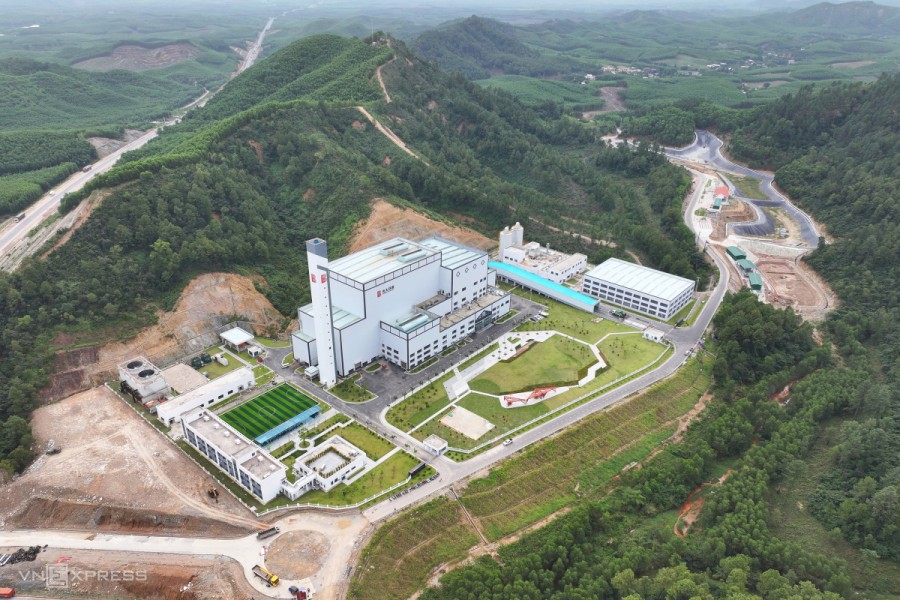The March 2024 commissioning of the Phú Sơn Solid Waste Treatment Plant in Thừa Thiên–Huế Province, Việt Nam, is an important part of the plan to reduce landfill in the region. PENETRON, a topically applied crystalline slurry, was used to protect the plant’s concrete walls and tanks from both high groundwater and the aggressive solid waste environment.
Hương Thủy, a county-level town in Thừa Thiên–Huế province, is located in the central coastal region of Vietnam, east of Huế and about 100 km (62 miles) northwest of Đà Nẵng. The town has a population of over 95,000.
The Thừa Thiên–Huế province is home to the Tam Giang–Cau Hai lagoon, the largest lagoon in Southeast Asia, with a surface area of 220 km2 (85 miles2). During the cooler wet season, rainfall in the region often occurs in sudden, heavy downpours, which result in extensive flooding and erosion – and serious damage to infrastructure and the environment.
Developed by the EB Thừa Thiên–Huế Environmental Energy Company, the Phú Sơn Solid Waste Treatment Plant has a capacity of 600 tons/day, generating 12MW/h daily. The plant uses multi-level burner waste incineration technology to generate electricity – and ensure compliance with national environmental regulations for domestic solid waste incinerators.
The Phú Sơn waste-to-energy plant for power generation in Thừa Thiên–Huế province is a central part of the VND 2 trillion (US$85 million) plan to collect, transport and treat solid waste for the province – and substantially reduce the volume of solid waste that previously ended up as landfill.
“The construction site of the Phú Sơn solid waste treatment plant is situated on a flat plain with lagoons and separated from the South China Sea by sandbanks,” explains Kim Khanh Ngo Xuan, CEO & Managing Director of Penetron Việt Nam. “As a result, concrete structures are exposed to high hydrostatic pressure from groundwater.”
However, the concrete tanks also need protection from the solid waste held on the inside. Kim Khanh Ngo Xuan explains: “Solid waste doesn’t stay solid; it quickly decomposes, typically forming leachate. This leachate liquid can lower the pH level of the concrete when it seeps into porous concrete. As a result, the passive protective layer around the reinforcing steel can deteriorate, allowing the steel to rust. This causes the concrete to crack and spall over time.”
Treating concrete with PENETRON, a crystalline waterproofing material, decreases the permeability of the concrete, stopping corrosive liquids (like leachate) and water from penetrating into the concrete and preventing corrosion of the embedded reinforcing steel. The active ingredients in PENETRON generate a non-soluble crystalline formation throughout the pores and capillary tracts of the treated concrete. These crystals permanently self-heal and seal micro-cracks, pores, and capillaries against the penetration of water or liquids from any direction. The concrete is now impermeable with increased durability and service life.
PENETRON was specified for the Phú Sơn plant’s basement retaining walls and for the solid waste collection area and residue tanks. It was topically applied as a slurry to 13,300 m2 (146,300 ft2) of concrete prepared by a Penetron-qualified application team.
“The new PENETRON-treated concrete structures are now protected from the high groundwater levels on the positive side and the leachates and chemicals from the solid waste on the negative side of the structures,” adds Kim Khanh Ngo Xuan.

Concrete walls and tanks protected by Penetron: This bird’s-eye view gives an idea of the dimensions of the Phú Sơn Solid Waste Treatment Plant in Thừa Thiên–Huế Province, Việt Nam.



